Data Governance Framework: 10 key elements
In the digital era, simply storing data isn’t enough. The companies extracting real value from their information have built a strong governance strategy, one that manages quality, access, security, and usage from source to consumption.
Without that structure, data becomes scattered, teams duplicate efforts, and decisions get made on incomplete or inaccurate information.
This blog will walk you through, without unnecessary technical jargon, the 10 critical elements every organization needs to master in order to build an effective Data Governance framework, one that delivers real business impact. If your company collects data from systems like ERP, HCM, SCM, CRM, or IoT, this is your starting point to unlock value and reduce risk.
Data Governance without structure is just an empty promise.
A well-defined framework enables you to:
-
Make confident decisions based on clean, traceable data
-
Prevent regulatory and operational risks
-
Coordinate data and IT teams under clear rules
-
Prepare your organization for AI and advanced analytics
In This Article, You’ll Learn:
-
The 10 key elements every governance framework must include
-
How to connect mission, processes, and technology into a single strategy
-
Best practices for defining roles, controls, and workflows
-
Why does all of this directly impact your ability to grow, innovate, and compete
1. Mission and Vision
Every Data Governance framework needs a clear purpose: What is your organization trying to achieve by governing its data?
Common goals include:
-
Ensuring regulatory compliance
-
Supporting decisions with trusted data
-
Aligning data use with business strategy
The vision defines the long-term goal. What transformation does your organization expect to accomplish with strong governance?
2. Goals, Metrics, and Funding
Your framework should include SMART goals (Specific, Measurable, Achievable, Relevant, Time-bound). You’ll also need clear metrics to track progress and identify gaps.
Funding is essential. What human, technical, and financial resources will be allocated to your Data Governance program? Without a budget, there’s no sustainable execution.
3. Rules and Policies
This is where you define the guidelines for:
-
Who can access which data
-
How data is created, transformed, and stored
-
What quality and security rules must be followed
Policies should be documented, communicated, and updated based on business or regulatory changes.
4. Decision-Making Structure
Who approves new data definitions? Who resolves cross-department disputes? Who decides what data to prioritize?
Your framework must define clear decision-making mechanisms, governance committees, escalation paths, and review protocols.
5. Roles and Responsibilities
Governance fails when everyone assumes it’s someone else’s job. Clearly define the following roles:
-
Data Owners – accountable for data quality and use
-
Data Stewards – custodians for specific business processes
-
Data Custodians – technical leads for storage and protection
6. Controls and Auditing
Data must be governable and auditable. Your framework should include:
-
Access controls
-
Automated validations
-
Regular audits
-
Quality and compliance indicators
These ensure traceability, accountability, and continuous improvement.
7. Data Stakeholders
Who is affected by data-related decisions? Identifying and engaging stakeholders is key to adoption and alignment.
Examples:
-
Finance needs accurate reporting
-
Legal requires traceability and compliance
-
Marketing depends on precise segmentation
8. Data Governance Office (DGO)
If your organization has reached a certain level of data maturity, it’s worth establishing a Data Governance Office:
-
Sets standards and guidance
-
Supports implementation
-
Coordinates with quality, privacy, architecture, and compliance teams
9. Data Stewards
These are your data “ambassadors” within business units. They translate operational needs into quality rules, naming conventions, documentation, and more. The ideal steward combines technical know-how, business insight, and strong communication skills.
10. Processes and Technology
Your framework must define repeatable processes for:
-
Metadata management
-
Data lifecycle
-
Quality and lineage tracking
-
Access, security, and privacy enforcement
All of this should be supported by the right technology, such as data catalogs, profiling tools, rules engines, and automation platforms.
Conclusion
Data Governance isn’t about putting up barriers; it’s about enabling control and confidence for those who use the data.
A strong framework is the first step to making that possible.
If you’re not sure where to begin, Arkon Data can help. We’ve supported companies across the Americas, guiding them from design to execution of governance models with real business impact.
Ready for Real Governance?
Implementing a Data Governance framework is a competitive advantage. But doing it without the right tools can be slow, expensive, and hard to scale.
Arkon Data Platform accelerates your governance strategy by integrating complex systems like Oracle Fusion Cloud (ERP, HCM, SCM) with modern environments like Databricks.
With Unity Catalog and Arkon, you can activate advanced governance features from day one.
Benefits:
-
Unify critical data sources without losing structure or traceability
-
Govern data from the first pipeline, not after the fact
-
Enable access control, lineage, and quality directly in your Databricks ecosystem
-
Build a solid foundation for analytics, AI, and compliance
Governed Data Ecosystem
Using Oracle, Snowflake, Azure, or Salesforce? We connect them. Explore how Arkon Data Platform helps you govern information from source to insight.
Frequently Asked Questions About Data Governance Frameworks
1. How is a Data Governance framework different from a data quality program?
They may seem similar, but a framework defines roles, rules, decisions, and technologies for the entire data lifecycle. Quality is just one part, focused on accuracy and completeness. Without a full framework, quality efforts won’t scale or sustain.
2. Is it realistic to implement governance in a company with silos and legacy systems?
Yes, but it takes prioritization. A good framework doesn’t centralize everything; it sets the ground rules so responsibilities can be shared, duplication is reduced, and governance starts where the data is created. Platforms like Arkon Data help you begin with complex systems like Oracle Fusion without disrupting what’s already in place.
3. What are the most common mistakes when designing a framework?
-
Creating it solely from IT without business input
-
Failing to assign a budget or clear ownership
-
Writing policies without enforcement or monitoring
-
Ignoring data lineage and traceability
-
Waiting to govern until the data is already chaotic
4. How can we measure whether our governance framework is working?
Use KPIs such as:
-
% of data with complete metadata
-
Average time to respond to access or compliance requests
-
Reduction in reporting errors
-
Increase in use of certified data sources
-
Policy coverage across key systems
If you can’t measure it, you can’t improve it. Learn more in this blog post.
5. What role does technology play? Is it essential?
It’s critical. You can define a framework on paper, but scaling and operating it without catalogs, profiling tools, lineage tracking, or access control is nearly impossible. Solutions like Arkon Data Platform + Unity Catalog help you embed governance into the data pipeline from the beginning.



